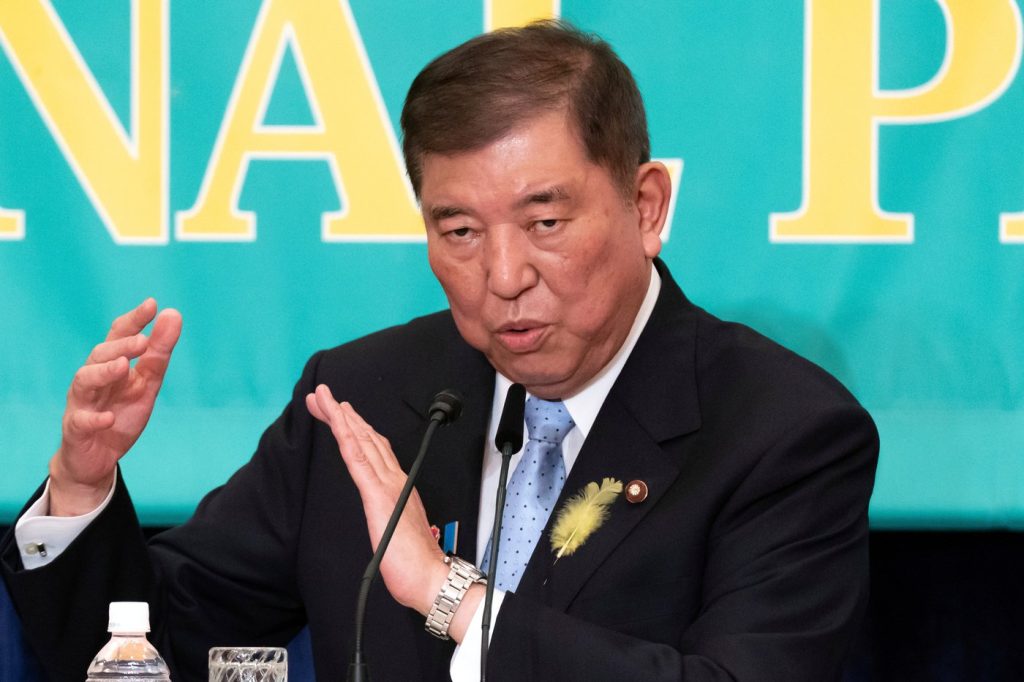TOKYO (AP) - Japan's Prime Minister Shigeru Ishiba is facing a critical challenge as he prepares for the upper house election scheduled for Sunday. A disappointing result could exacerbate the political instability in Japan, particularly amidst pressing issues such as rising prices and high U.S. tariffs. Ishiba's ruling Liberal Democratic Party (LDP) recently experienced a significant loss in the lower house election in October, leading to increased voter discontent over past corruption scandals and the ongoing economic crisis.
Ishiba must regain the trust of the electorate, as the LDP's performance in this election does not immediately threaten the government but could lead to deeper uncertainties surrounding his leadership and Japan's political direction. With 248 seats in the upper house, the LDP and its junior coalition partner Komeito need to secure a combined 50 seats to maintain a simple majority. This would mark a substantial decline from the 141 seats they previously held. Political analysts warn that failing to secure this majority may prompt moves within the LDP to replace Ishiba, resulting in greater instability.
If Ishiba's coalition manages to retain its majority, his leadership is expected to remain weak and unlikely to improve significantly. As a minority government, the LDP will be required to seek cooperation from opposition parties to implement any meaningful policies. Voter frustrations centered on skyrocketing prices, low wages, and burdensome social security payments have dominated the election landscape. Recently, rice prices have doubled, creating a crisis that has prompted panic buying. This situation has further complicated Ishiba's leadership, with pressure from U.S. President Donald Trump's tariff demands exacerbating the situation.
The upcoming election is also marked by a growing trend toward populism in Japanese politics. Emerging parties, like Sanseito, are promoting anti-foreign policies and advocating for a return to traditional gender roles. Critics argue these parties are scapegoating foreigners for economic woes and rising insecurity, echoing populist movements in Europe and the United States. They assert that frustrations among Japanese citizens are being misdirected toward foreign residents, despite data indicating that only about 3% of Japan's total population are foreign residents.
In response to public anxiety about rising immigration, the LDP has sought to reinforce its position with initiatives such as lowering illegal immigrant numbers and a crackdown on unlawful employment among foreigners. The situation has stirred protests from human rights activists and heightened concerns among foreign communities in Japan. Japan, with its aging and declining population, is in need of foreign workers, and a more strategic approach to immigration policy is urged by experts.
While the opposition appears to have gained ground against the LDP, it remains divided and unable to unify under a single platform. Groups including the Constitutional Democratic Party of Japan (CDPJ), Democratic Party for the People (DPP), and Sanseito, though gaining conservative support, are struggling to present a cohesive alternative. Speculations about a potential coalition government between the Komeito and DPP have surfaced, but tangible cooperation remains limited.
Should the LDP lose its majority in the upper house, this could lead to significant shifts within the political landscape, potentially allowing opposition parties to push for reforms that have been blocked by the ruling coalition. The political future of Ishiba and the direction of Japan's policies hang delicately in the balance as the election approaches.










